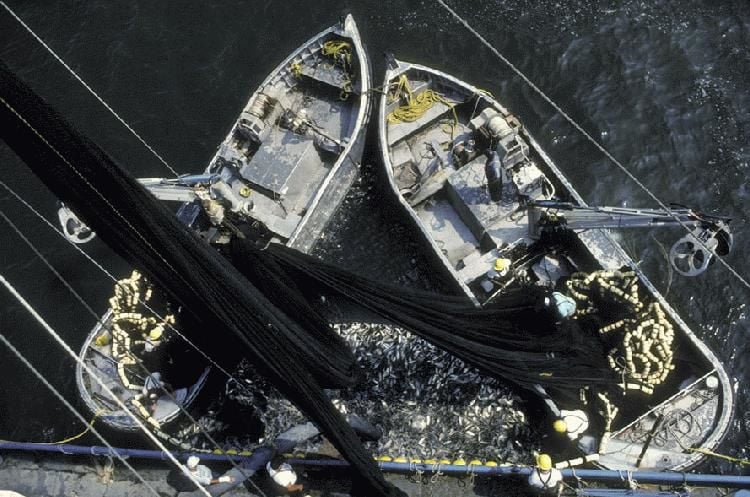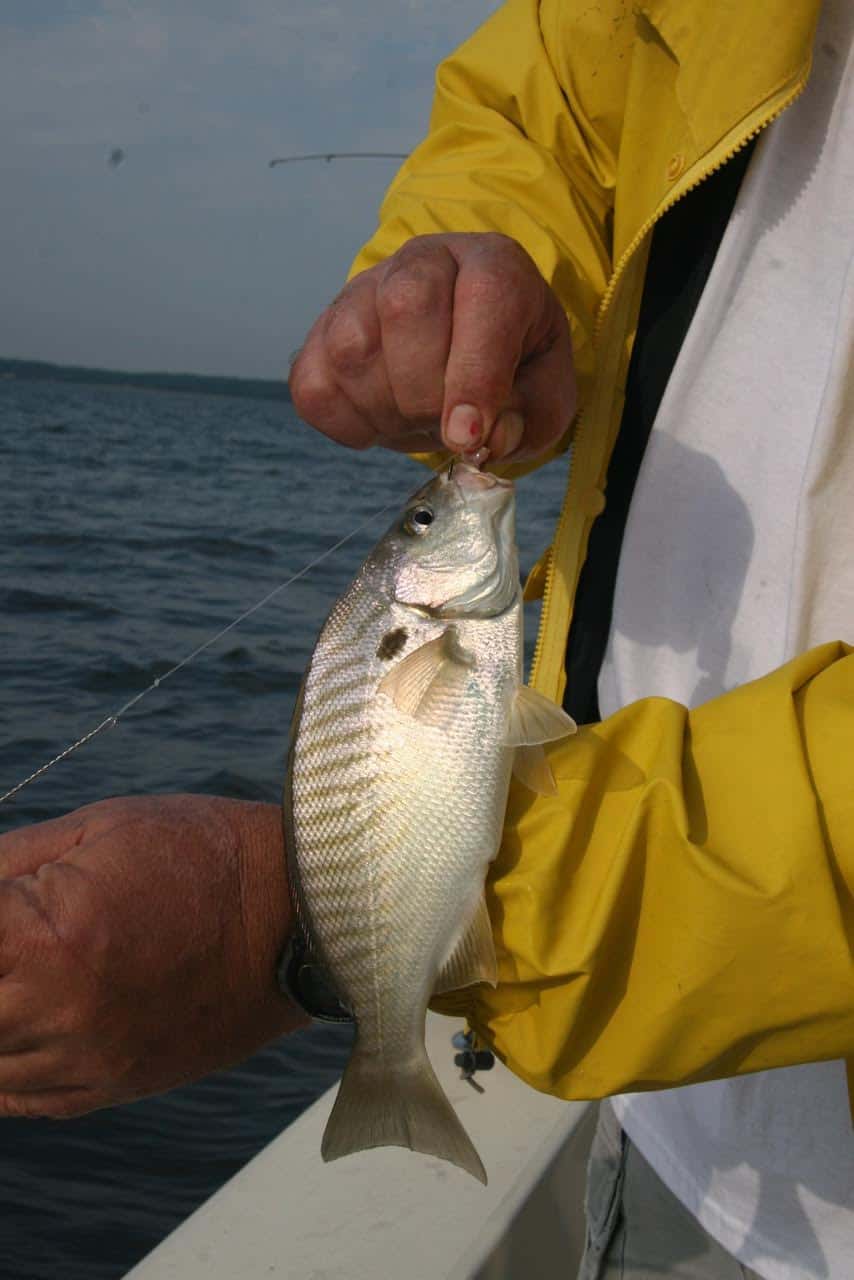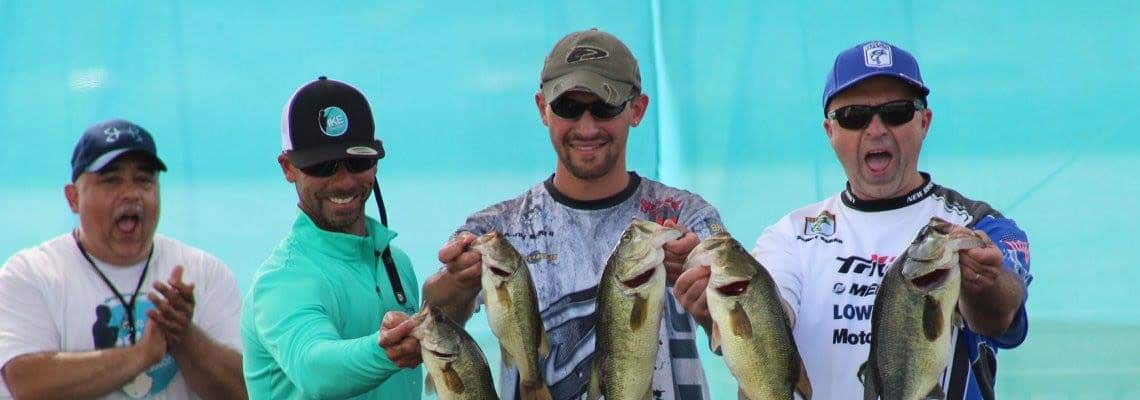By Timothy B. Wheeler, Bay Journal News Service
East Coast fishery managers have approved increasing commercial harvests of Atlantic menhaden from Maine to Florida.
The Atlantic States Marine Fisheries Commission (ASMFC), which regulates near-shore harvests of migratory fish, voted Wednesday to set a new ceiling on the coastwide menhaden catch of 233,550 metric tons, a 20 percent increase over the current quota.
The longstanding cap on harvest in the Chesapeake Bay remains unchanged, at 51,000 metric tons. But conservationists and sports anglers continue to worry about the impact to the Bay from large-scale fishing of menhaden near its mouth.
The commission’s action follows a recent population assessment that concluded menhaden are not being overfished and that harvests could be increased substantially without endangering the stock’s abundance.
Menhaden are a small, oily fish that are harvested chiefly for processing or “reducing” them into animal feed and human food supplements, but also for use as bait in crabbing, lobstering and catching other fish.
Their commercial harvest has long been controversial, especially in the Bay, a prime nursery area for the coastal stock. Conservation groups contend a fishing fleet operated by Omega Protein out of Reedville, VA, leaves too few of the forage fish in the water to support striped bass and a variety of other creatures that feed on them.
In response to that concern, the commission adjusted its assessment process a couple of years ago to better account for menhaden’s role in the food chain. But to the dismay of some conservation advocates, the new methodology concluded the stock was healthy enough to sustain increased harvests.
“We thought this population has been healthy for a long time,” said Omega spokesman Ben Landry, but the commission had hesitated for years to act on previous expert advice supporting an increase. “It seems like this time they really put their faith in what the stock assessment indicated.”
The raised harvest cap will be of limited benefit to Omega, however, because the commission also reallocated the catch along the coast. It awarded a slightly larger share to commercial harvesters in New England, where they’ve been netting more menhaden in recent years to provide bait for the lobster industry and other fishing. As a result, Virginia saw its share of the overall coastwide harvest trimmed.
Landry said the increased coastwide harvest cap would still allow Omega to net more fish, but not as many as it had hoped. He said that might limit the number of people the company could hire to augment its Reedville workforce of 260.
Conservation advocates acknowledged the logic of the reallocation but were disappointed with the size of the increase.
Chris Moore, senior regional ecosystem scientist for the Chesapeake Bay Foundation, said he had hoped the commission would only permit a smaller bump up in catch because so much of it occurs near the mouth of the Bay. Omega’s six fishing vessels operating mainly in the Bay and off Virginia’s coast account for about 70 percent of the entire Atlantic Coast harvest.
“Recognizing the importance of menhaden to striped bass, other fish, birds, and marine mammals,” Moore said, “we believe a more cautious approach to the quota increase was warranted.”
Steve Atkinson, president of the Virginia Saltwater Sportfishing Association, likened the commission’s decision to “a slap in the face” after experiencing what he described as the poorest fishing season he’s ever had along Virginia’s Eastern Shore.
“This just puts more pressure on Virginia menhaden and increases the likelihood that we don’t have enough menhaden in the Bay to serve as forage for fish like striped bass, cobia and others,” Atkinson said.
Two Virginia lawmakers have indicated they may seek legislation calling for a study of whether menhaden are locally depleted, but Atkinson said that could take years to determine.
“We don’t really have 7 to 10 years to find out if there’s a problem here,” Atkinson said. In addition to faulting Omega for scooping up too many fish, he and others complain about large “spills” of dead menhaden and other fish washing up on Bay shorelines from nets when the fleet is working the lower Chesapeake.
Landry said he doubted that such a study would be possible. Menhaden migrate in and out of the Bay, causing their numbers inside the estuary to ebb and flow dramatically, he explained.
“I think the concept of it is great,” Landry said. “I just don’t know how that gets done with any credibility.”
A coalition of 11 national and Virginia-based conservation and sportfishing groups, including Atkinson’s, have gathered more than 10,000 signatures on petitions calling on Virginia to bar Omega from harvesting menhaden in the Bay.



